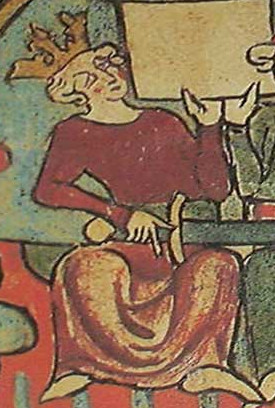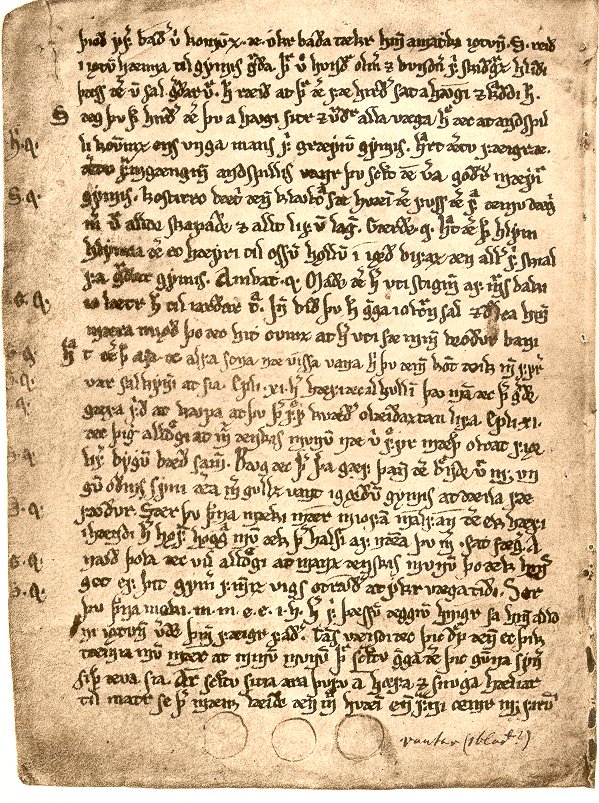|
Partalopa Saga
''Partalopa saga'' (or ''Partalópa saga'') is a medieval Icelandic romance saga deriving from the medieval French '' Partenopeus de Blois''. Synopsis Kalinke and Mitchell summarise the saga thus: Presumably either a thirteenth-century translation from a lost version of the French ''Partenopeus de Blois'', or an Icelandic reworking of a lost Norwegian translation. Partalopi, son of King Hlöðvir of Frakkland, is transported to Miklagarð where he becomes the lover of Marmoria, a maiden king, who remains invisible to Partalopi, while he remains invisible to her courtiers. Marmoria warns Partalopi that any attempt to see her will result in his death. Partalopi disobeys, but is saved by Marmoria's sister. After a succession of adventures, the lovers become reconciled, marry, and rule jointly.Marianne E. Kalinke and P. M. Mitchell, ''Bibliography of Old Norse–Icelandic Romances'', Islandica, 44 (Ithaca: Cornell University Press, 1985), p. 90. Manuscripts Kalinke and Mitchell iden ... [...More Info...] [...Related Items...] OR: [Wikipedia] [Google] [Baidu] |
Romance Saga
The ''riddarasögur'' (literally 'sagas of knights', also known in English as 'chivalric sagas', 'romance-sagas', 'knights' sagas', 'sagas of chivalry') are Norse prose sagas of the romance genre. Starting in the thirteenth century with Norse translations of French '' chansons de geste'' and Latin romances and histories, the genre expanded in Iceland to indigenous creations in a similar style. While the ''riddarasögur'' were widely read in Iceland for many centuries they have traditionally been regarded as popular literature inferior in artistic quality to the Icelanders' sagas and other indigenous genres. Receiving little attention from scholars of Old Norse literature, many remain untranslated. The production of chivalric sagas in Scandinavia was focused on Norway in the thirteenth century and then Iceland in the fourteenth. Vernacular Danish and Swedish romances came to prominence rather later and were generally in verse; the most famous of these are the Eufemiavisorna, the ... [...More Info...] [...Related Items...] OR: [Wikipedia] [Google] [Baidu] |
Partenopeus De Blois
''Partonopeus de Blois'' is a long poem in the chivalric romance genre written in Old French in the 1170s or 1180s. Its author is unknown, but some scholarly studies indicate Denis Pyramus. Plot Partonopeus is represented as having lived in the days of Clovis, king of France. He is seized while hunting in the Ardennes, and carried off to a mysterious castle with invisible inhabitants. Melior, empress of Constantinople, comes to him at night, stipulating that he must not attempt to see her for two and a half years. After successfully fighting against the Saracens, led by Sornegur, king of Denmark, he returns to the castle, armed with an enchanted lantern that breaks the spell. The consequent misfortunes have a happy ending. The tale had a continuation giving the adventures of Fursin or Anselet, the nephew of Sornegur. Analogues The tale is in essence a variant of the legend of Cupid and Psyche."10.Zwei Parallelen zum Psychemärchen." In: Zinzow, Adolf. Psyche und Eros: ein mil ... [...More Info...] [...Related Items...] OR: [Wikipedia] [Google] [Baidu] |
Ormsbók
Ormsbók or Ormr Snorrason's Book was a large Icelandic manuscript of chivalric sagas. It is assumed that it was destroyed in the Stockholm castle fire of 1697 as it was last recorded in an inventory in 1693. It takes its name from Ormr Snorrason, the 14th century Icelandic chief and lawman who also owned the large collection of apostles' sagas Codex Scardensis. It arrived in Sweden as a gift to an antiquarian in 1602; during the 15th and 16th centuries its whereabouts are unknown. The manuscript was frequently used in lexicographical works which quote many sections from it. Between 1690 and 1691 the manuscript was copied by the Icelander Jón Vigfússon. Vigfússon's copy survives in the manuscripts Stockholm Papp. fol. nr 46, 47, 58 and 66. Desmond Slay has argued that the end of ''Ívens saga'' and the beginning of ''Mírmans'' ''saga'' were lost in the lacuna after folio 81v. In addition he argues that the end of ''Ívens saga'' in Stockholm Papp. fol. no. 46 is not from Orm ... [...More Info...] [...Related Items...] OR: [Wikipedia] [Google] [Baidu] |
Chivalric Sagas
The ''riddarasögur'' (literally 'sagas of knights', also known in English as 'chivalric sagas', 'romance-sagas', 'knights' sagas', 'sagas of chivalry') are Norse prose sagas of the romance genre. Starting in the thirteenth century with Norse translations of French '' chansons de geste'' and Latin romances and histories, the genre expanded in Iceland to indigenous creations in a similar style. While the ''riddarasögur'' were widely read in Iceland for many centuries they have traditionally been regarded as popular literature inferior in artistic quality to the Icelanders' sagas and other indigenous genres. Receiving little attention from scholars of Old Norse literature, many remain untranslated. The production of chivalric sagas in Scandinavia was focused on Norway in the thirteenth century and then Iceland in the fourteenth. Vernacular Danish and Swedish romances came to prominence rather later and were generally in verse; the most famous of these are the Eufemiavisorna, them ... [...More Info...] [...Related Items...] OR: [Wikipedia] [Google] [Baidu] |
Icelandic Literature
Icelandic literature refers to literature written in Iceland or by Icelandic people. It is best known for the sagas written in medieval times, starting in the 13th century. As Icelandic and Old Norse are almost the same, and because Icelandic works constitute most of Old Norse literature, Old Norse literature is often wrongly considered a subset of Icelandic literature. However, works by Norwegians are present in the standard reader ''Sýnisbók íslenzkra bókmennta til miðrar átjándu aldar'', compiled by Sigurður Nordal on the grounds that the language was the same. Early Icelandic literature The medieval Icelandic literature is usually divided into three parts: *Eddic poetry *Sagas *Skaldic poetry The ''Eddas'' There has been some discussion on the probable etymology of the term "Edda". Most say it stems from the Old Norse term ''edda'', which means great-grandmother, but some see a reference to Oddi, a place where Snorri Sturluson Snorri Sturluson ( ; ; 1179 – 22 S ... [...More Info...] [...Related Items...] OR: [Wikipedia] [Google] [Baidu] |

